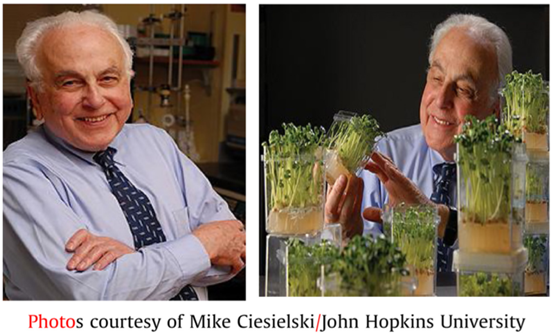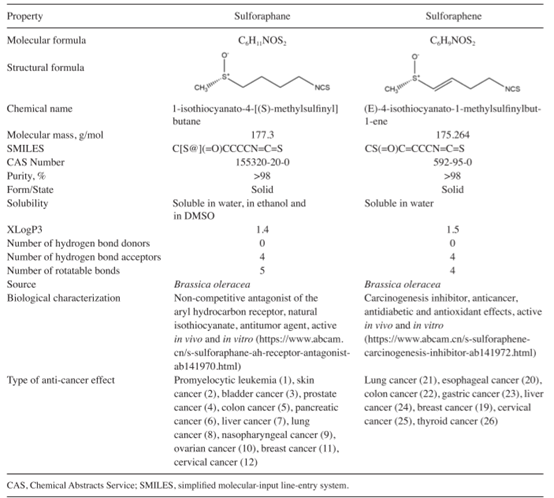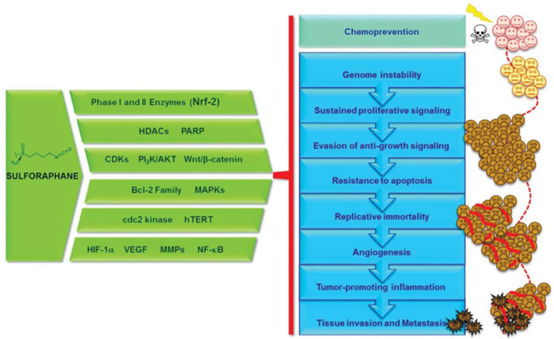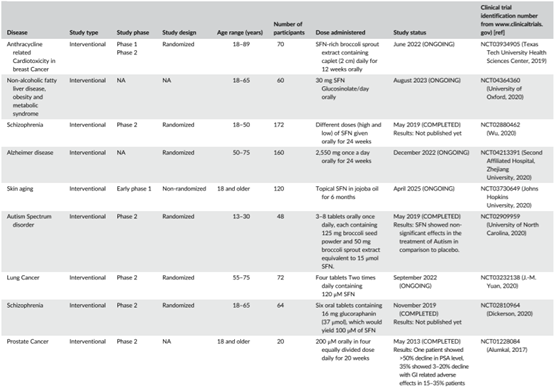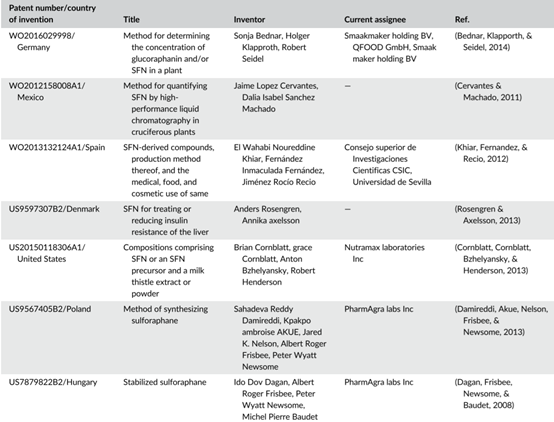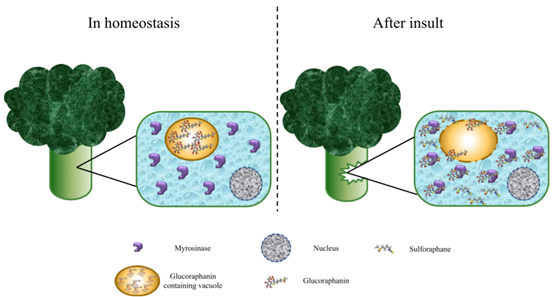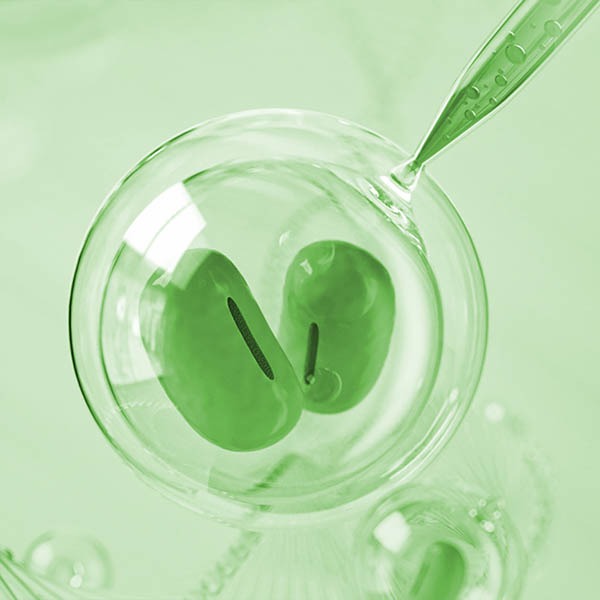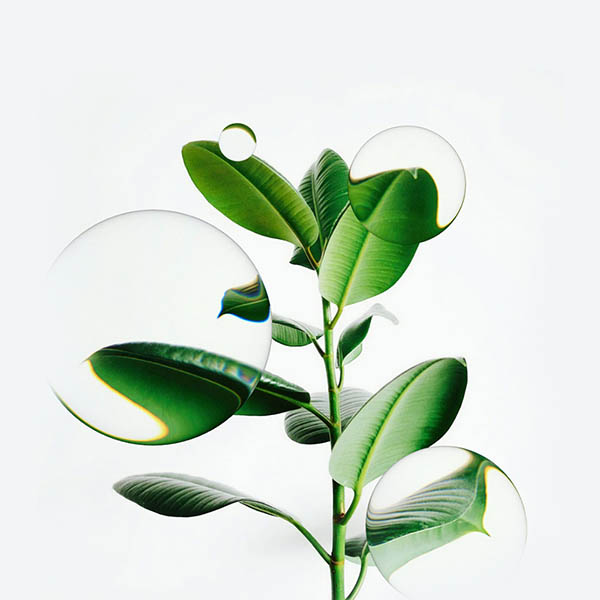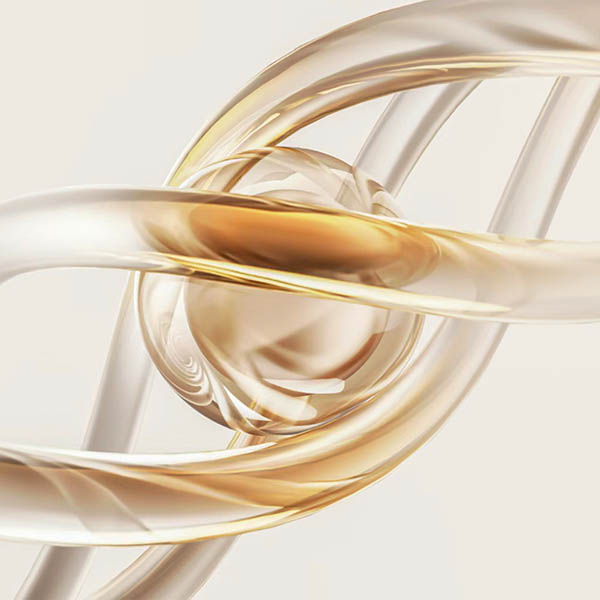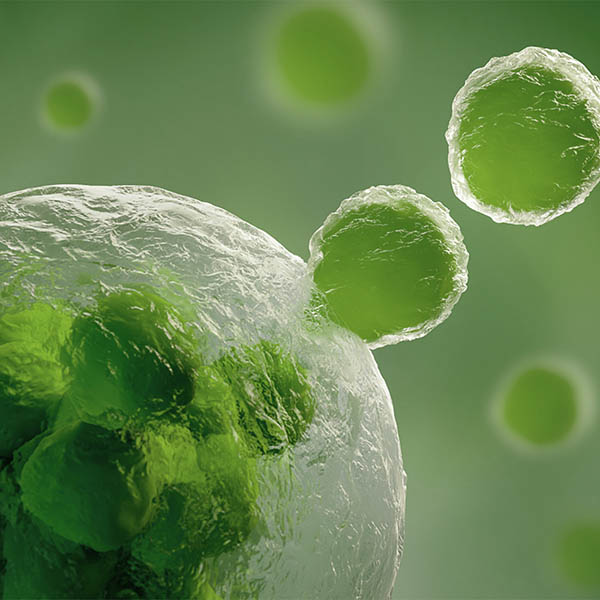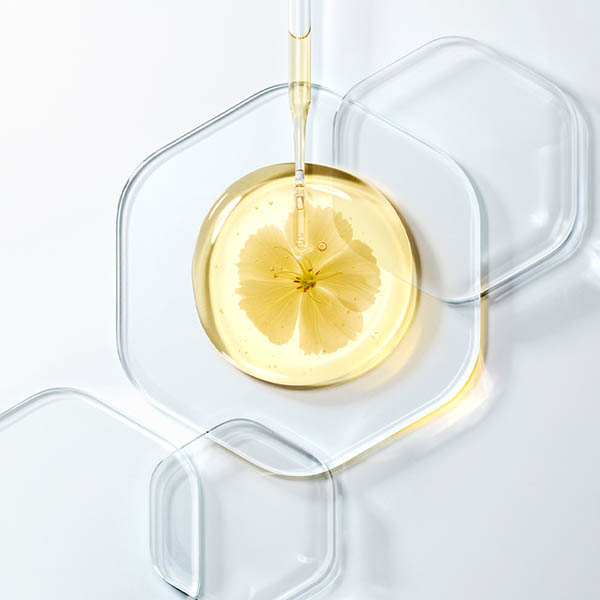The End of the Road to Longevity is Broccoli? – Anti-Cancer, Anti-Inflammatory, Anti-Aging, Brain Protection Etc.
1. Brief History of Sulforaphane
First, let’s turn the clock back to 1992 – studies at the time found that eating vegetables, especially cruciferous plants could reduce the prevalence of cancer through unknown mechanisms. Professor Paul Talalay (1923-2019) of John Hopkins University School of Medicine investigated and found that cruciferous vegetables can activate detoxification enzymes in phase II, thereby neutralising carcinogenic products and reducing the risk of cancer. [1]
In the same year, Paul Talalay’s research group isolated and identified a phase II detoxification enzyme agitator from broccoli buds – (R)-1-isothiocyanoyl-4-(methylsulfinyl)butane, or sulforaphane. Their published data claimed that sulforaphane is by far, the best anti-cancer/anti-tumour effect phyto-active found in food ingredients. [2] With the deepening of research, sulforaphane slowly emerged into the public market. In 1997, Paul Talalay discovered that the content of glucoraphanin (sulforaphane precursor) in broccoli sprouts and seeds was 10-100 times higher than that of mature plants, making them more suitable for industrialisation. [3] Talalay later founded Brassica Protection Products (BPP), a company that specialises in broccoli sprouts.
In 2013, glucoraphanin was approved by US FDA (GRAS certification) for use as a food additive. In 2017, China also approved “broccoli seed extract” as a new food raw material (Weishi Xinjin Shenzi (2015) No. 0002) for use in food and health products.
Figure 1. Photo courtesy of Prof. Paul Talalay(1923-2019)
2. Sulforaphane – Carrot or Broccoli?
Sulforaphane (SFN) is mainly found in broccoli and broccoli buds; sulforaphane, also known as lysine, is mainly found in carrots and turnip seeds – these two molecules are very similar in structure, only one hydrogen atom apart, and it is this hydrogen atom that determines the different chemical properties of alkane and alkene (Figure 2). Although sulforaphene was founded before sulforaphane, the medical value shown in scientific research of the latter has significantly exceeded the former. A search for “sulforaphane” in the National Institutes of Health’s PubMed database yielded 2569 results while a search for “sulforaphene” yielded only 65 results.
Figure 2. Differences between sulforaphane and sulforaphene [4]
3. Anti-Cancer,Anti-Inflammation,Neuroprotection
As soon as sulforaphane was discovered, a large number of research regarding this molecule emerged. The epidemiology of cancer is very complex, consisting of thousands of different pathways. Sulforaphane has been shown to block different cancer progression pathways in various ways, thereby inhibiting cancerous cell transformation (as shown in figure below.)
Figure 3. Sulforaphane’s anti-cancer effects and mechanism [5]
Sulforaphane is also a gift to patients with neurological disorders. The antioxidant, anti-inflammatory and anti-apoptotic properties exhibited by sulforaphane during the anti-cancer process can be used as a potential therapeutic marker for neurological diseases.
Many in vivo and in vitro experimental studies have demonstrated that sulforaphane can play a neuroprotective role in neurodegenerative diseases such as Alzheimer’s disease, Parkinson’s disease, multiple sclerosis, as well as epilepsy, autism and other neurological diseases. [6-8]
4. Anti-aging
Anti-cancer and neuroprotection properties can indirectly delay aging. Sulforaphane not only indirectly delays aging, but also have direct anti-aging properties. In 2018, the University of Warwick, School of Medicine treated human fibroblasts with sulforaphane in vitro and found that it was able to reduce glucose metabolism and exhibit a calorie-restriction-like activity that reduces oxidative damage to cellular proteins and DNA, thereby delaying the aging process in human MRC-5 and BJ fibroblasts. [6]
Moreover, researchers from the University of Heidelberg in Germany used nematodes, (C. elegans) animal model to study the anti-ageing mechanism of sulforaphane in 2021. After rigorous controlled variable studies, as well as molecular genetic manipulation techniques and life cycle assessments, it was determined that sulforaphane further regulates nematode migration and feeding capacity by regulating the TRA-1 & DAF-16 signalling pathways, thereby extending their healthy life expectancy by 8.9%. [7]
In addition to classic cell and animal experiments, medical researchers have also applied sulforaphane extract to numerous clinical trials, which demonstrated positive effective results, including: breast cancer, autism, skin aging and many other studies (as shown in the figure below).
Figure 4. Clinical studies on the application of sulforaphane [8]
In summary, at the molecular level, sulforaphane can effectively regulate the transcription factor Nrf2, which is the core transcription factor for the body’s regulation of antioxidant and metabolic detoxification gene expression. It can also effectively inhibit the NF-κB signalling pathway to activate antioxidant and anti-inflammatory responses, thus achieving anti-aging effects. [5]
At the cellular level, sulforaphane protects cellular DNA from damage by activating phase II enzymes and regulates the cell cycle by activating key regulatory factors, inducing cell blockade, prolonging cell life.
At the clinical level, sulforaphane has not only shown positive effects in multiple clinical trials against cancer, skin aging, diabetes, neurological diseases etc. but has also spawned a number of patented technologies (Figure 5).
Figure 5. Patents on sulforaphane [8]
5. What’s more?
In the resting state, sulforaphene, the precursor of sulforaphane, is stored in the vacuoles of broccoli cells. When a cell is damaged (e.g. harvested, infected, chewed), the vacuole ruptures and releases sulforaphene, which is then localised in the cytoplasm where it is cleaved by myrosinase, and transformed into sulforaphane and glucose (Figure 6). [9]
Figure 6. State of broccoli cells in homeostasis (left) and after insult (right) [9]
Therefore, the successful conversion of sulforaphane depends largely on the activity of myrosinase. However, the activity of myrosinase decreases with the increase in temperature and the decreased in pH, that is equivalent to high-temperature cooking and the digestion process of stomach acid; this means the bioavailability of sulforaphane from broccoli intake is limited as the cooking and digestion process can reduce myrosinase activity, reduce the conversion of sulforaphane, thus reduce absorption. Fortunately, even without the presence of myrosinase, microorganisms in our intestinal flora can spontaneously convert sulforaphene to sulforaphane. [9,10]
Sulforaphane supplementation with broccoli intake alone is far from sufficient, a source with a higher concentration and conversion rate is necessary. [11]
References
[1] H J PROCHASKA,A B SANTAMARIA,P TALALAY. Rapid Detection of Inducers of Enzymes that Protect Against Carcinogens. Proceedings of the National Academy of Sciences – PNAS,1992,89(6):2394-2398.
[2] P T T C YUESHENG ZHANG. A major inducer of anticarcinogenic protective enzymes from
broccoli: Isolation and elucidation of structure. A major inducer of anticarcinogenic protective enzymes from,1992,89(6):2399-2403.
[3] J W Fahey,Y S Zhang,P Talalay. Broccoli sprouts: an exceptionally rich source of inducers of enzymes that protect against chemical carcinogens. Proceedings of the National Academy of Sciences – PNAS,1997,94(19):10367-10372.
[4] L Gao,Du F,J Wang,等. Examination of the differences between sulforaphane and sulforaphene in colon cancer: A study based on next-generation sequencing. Oncol Lett,2021,22(4):690.
[5] M Russo,C Spagnuolo,G L Russo,等. Nrf2 targeting by sulforaphane: A potential therapy for cancer treatment. Crit Rev Food Sci Nutr,2018,58(8):1391-1405.
[6] F Hariton,M Xue,N Rabbani,等. Sulforaphane Delays Fibroblast Senescence by Curbing Cellular Glucose Uptake, Increased Glycolysis, and Oxidative Damage. Oxidative Medicine and Cellular Longevity,2018,2018:1-16.
[7] H Ji,Z Qi,D Schrapel,等. Sulforaphane Targets TRA-1/GLI Upstream of DAF-16/FOXO to Promote C. elegans Longevity and Healthspan. Frontiers in Cell and Developmental Biology,2021,9.
[8] B Mangla,S Javed,M H Sultan,等. Sulforaphane: A review of its therapeutic potentials, advances in its nanodelivery, recent patents, and clinical trials. Phytotherapy Research,2021,35(10):5440-5458.
[9] R Santín-Márquez,A Alarcón-Aguilar,N E López-Diazguerrero,等. Sulforaphane – role in aging and neurodegeneration. GeroScience,2019,41(5):655-670.
[10] W Yuanfeng,L Chengzhi,Z Ligen,等. Approaches for enhancing the stability and formation of sulforaphane. Food Chemistry,2021,345:128771.
[11] C A Houghton. Sulforaphane: Its “Coming of Age” as a Clinically Relevant Nutraceutical in the Prevention and Treatment of Chronic Disease. Oxidative Medicine and Cellular Longevity,2019,2019:1-27.

